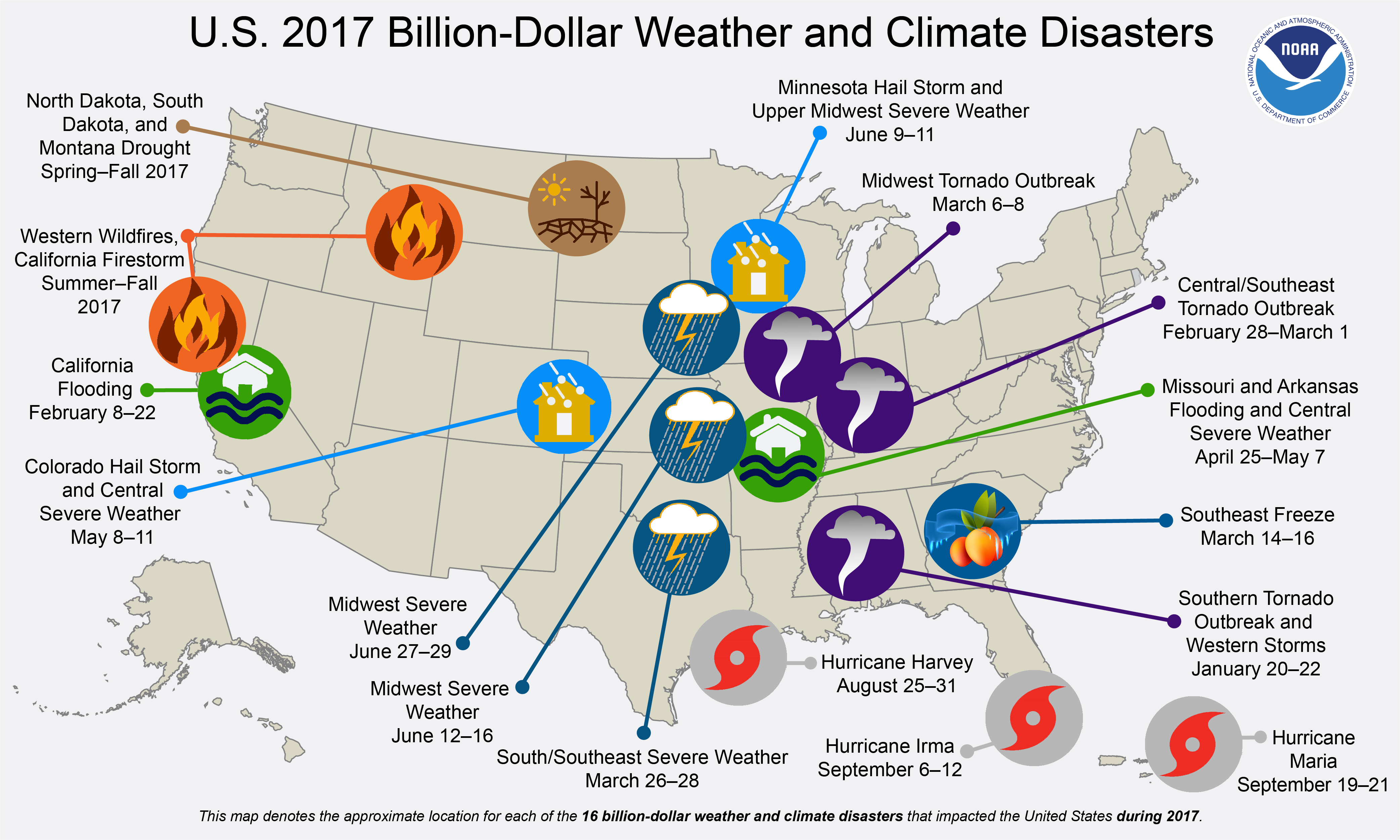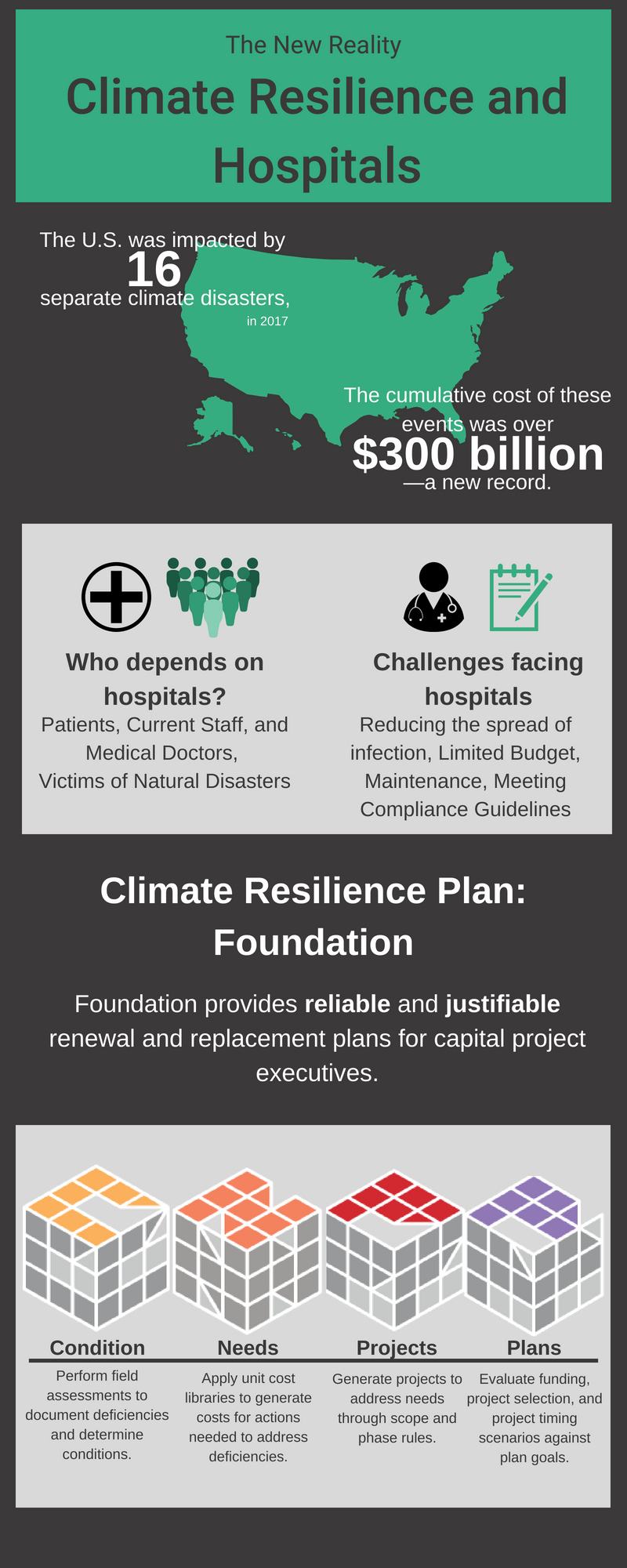Climate change has become one of the greatest concerns of our time, especially for those who manage hospitals and healthcare physical assets and infrastructure. Designing buildings that are truly sustainable and resilient means considering the potential side effects of climate change.
The New Reality: Climate Resilience and Healthcare Facilities Management
Climate change has quickly emerged as one of the most pressing challenges of our time, affecting various industries in unprecedented ways. However, the impact on healthcare facilities and infrastructure management is particularly significant. As extreme weather events become more frequent and severe, the resilience and sustainability of healthcare buildings are being put to the test. The need to develop comprehensive Emergency Response Management Systems and climate resilience plans has never been more urgent. In this blog, we will explore the critical intersection of climate change and healthcare facilities management, delving into the challenges and opportunities faced by facility managers in ensuring the safety and continuity of care for patients in the face of climate-related disasters.
The Cost of Climate Disasters
In recent years, the United States has been subject to some of the most challenging climate conditions among industrialized nations. The numbers are sobering:
- In 2017 alone, the U.S. was impacted by 16 separate climate disasters.
- As a result, each climate disaster incurred losses that exceeded $1 billion.
- The cumulative cost of these events was over $300 billion—a new record.

Image via The National Centers for Environmental Information (NCEI)
Hospitals and medical facilities care for our society’s most vulnerable; they are the key to our nation’s success. Yet, it is our nation’s hospitals and medical facilities that are most vulnerable during episodes of extreme weather. These facilities are critical: they provide essential rescue and response services; they become a refuge center for displaced persons; and they provide continuing care for patients already in treatment. Local and national agencies rely on healthcare facilities to function properly and provide protection for our nation and citizens in the face of extreme weather events.
Discover the top 4 areas to focus on when developing an Emergency Response Management program.
Scientists and economists now predict that climate change will increasingly bring about a higher frequency of extreme weather events such as cyclones, floods, heat waves, high winds and winter storms. All of which negatively impact the structural integrity of buildings and infrastructure. Protecting against future natural disasters as well as scheduling and carrying out repairs related to weather damage presents a significant challenge for facility managers and capital planning executives—particularly healthcare facility managers.
Weather Damage in Context
Damage to infrastructure and logistics can compromise the reputation that a healthcare facility has worked so diligently to establish. If rain or wind destroys a power source and the hospital's back-up generators are not in check, this can result in a failure of care to patients across the entire facility network of buildings. Patients who require power-sourced supplies will face a life or death situation due to the hospital’s lack of climate resilience. Extreme weather not only affects physical facilities but can also disrupt supply chain distribution, which is critical to hospital functionality.
When the supply chain is disrupted, hospitals tend to experience an increase in reimbursement rates and a growing list of patient complaints. Maintaining a successful healthcare facility is a combination of many functions and procedures that all work together seamlessly. Even if you provide top of the line care, if you cannot cope adequately in a time of crisis then your reputation will pale in comparison to better prepared competition.
Climate Resilience: A New Conversation
It’s clear that climate change is one of the most significant challenges of our time. Those who manage and oversee physical assets and infrastructure of all kinds increasingly appreciate the scale of this challenge, but it is those who manage hospitals, healthcare, and medical care facilities who feel this challenge most acutely. Now more than ever, this industry needs to develop climate resilience plans.
A climate resilience plan will provide significant benefits to healthcare facilities. Primarily, it is a matter of guaranteeing the day-to-day duty of care of the facility to its patients. Healthcare facilities can also protect their physical assets and protect their budgets by investing in a climate resilience plan. Many hospitals have already taken advantage of the prolonged savings that a climate resilience plan can achieve in a time of extreme weather destruction. However, the reality is that while climate resilience is a hot topic of discussion for multi-building facilities across many industries, it is the healthcare industry that currently lacks facility-wide climate resilience plans.
Build Your Climate Resilience Plan with Foundation
Investing in and planning for climate resilience is a priority for healthcare facility managers. Meeting this growing need is no simple feat. Hospitals have limited budgets for daily upkeep and find it difficult to make modernizing improvements as it is. This scarcity of funding means that hospitals simply don’t have the excess budgeting necessary for what was historically unexpected but is now increasingly anticipated—the damage and destruction of infrastructure due to extreme weather events.
Discover how Intellis software solutions optimize physical asset management and capital planning.
The most crucial part of climate resilience is planning. The Intellis Foundation platform has proven to help facilities in many industry sectors, and it can assist you in preparing for weather destruction. FOUNDATION is consists of 4 major functions:
- Conditions: enables users to gather onsite inspection data directly on a mobile device, create real-time reports, and drive deficiency-based renewal and replacement planning.
- Needs: analyzes data collected through Conditions to track and prioritize deficiencies across the entire network of buildings and grounds.
- Projects: automatically scopes, estimates, and schedules facility management and capital planing projects.
- Plans: integrates with enterprise financial systems to provide real-time views of commitments and spend.
Find out more about Foundation software for healthcare facilities management.
Using Foundation to develop your climate resilience plan will enable you to assess property conditions, determine which needs must be addressed, define the scope of projects and build robust plans that will ensure facility safety and compliance. Addressing these factors before the next extreme weather event will save you time and money upfront and in the long run. Planning for the future with Foundation will enable the facility management team to identify key savings and stay within budget.
Foundation helps a facility meet all the internal needs for a successful climate resilience plan. Learn more about FOUNDATION and schedule a demo with us today!



